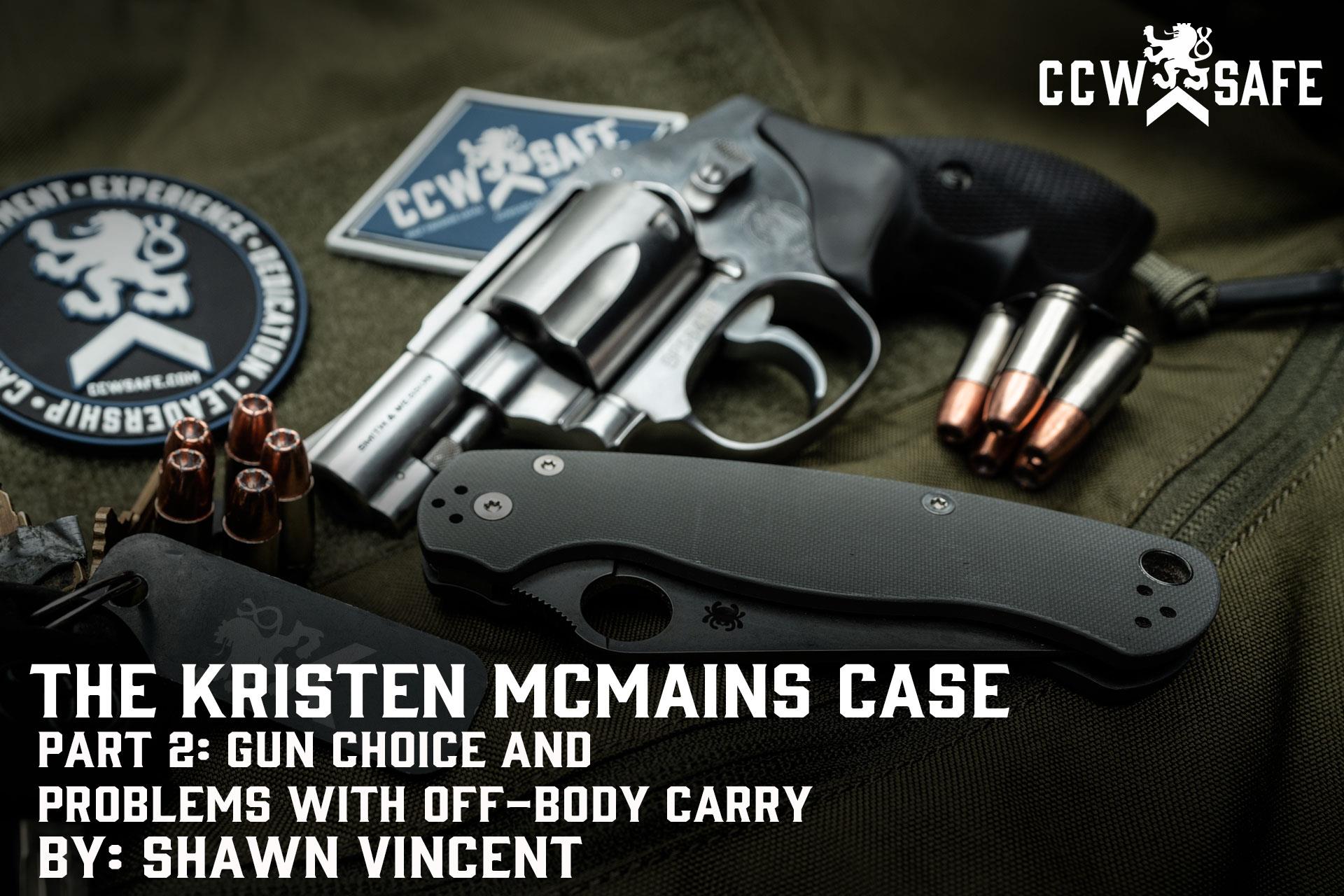
Posted on June 11, 2021
The Kristen McMains Case Pt.2
The Kristen McMains Case
Part 2: Gun Choice and Problems With Off-Body Carry
Kristen McMains’ father bought her a .32 Beretta Tomcat for personal protection. The 25-year-old concealed carrier chose to keep it in her purse. On the evening of January 26, 2016, she was glad she had it. After working late at her law firm, McMains noticed a suspicious man following her across the skywalk connecting her office building to the Fourth Street Live! Parking Garage. When he entered the garage elevator with her and failed to press a button, she started to fear for her life. “I had the instinctive feeling I was going to die tonight,” she said, “unless I did something.”
When the doors opened, she sprinted to her car, but the man followed. As she tried to get in her vehicle, her attacker “tackled her, slammed her head and stabbed at her abdomen with a rusty, serrated knife,” according to the Courier Journal. He pushed her into the passenger seat and said, “We’re going.”
“He would have killed me,” McMains told reporters. “He would have kidnapped me, killed me, and I don’t want to think about what would happen in the meantime.”
In order to retrieve her pistol from her purse, McMains told her attacker that she had just cashed a check and had money. Instead of reaching for cash, she grabbed her firearm. When she produced the pistol, at first it didn’t fire, but she kept pulling the trigger until, finally, a round burst out. She shot her attacker in the neck and buttocks, causing him to flee. Police later apprehended 27-year-old John Ganobcik, who is now serving prison time for the brutal assault.
Recently, I spoke to firearms instructors Tatiana Whitlock and CCW Safe’s Steve Moses about this case, and both voiced concerns about McMains’ decision to carry her pistol in her purse. “It’s not to say that off-body carry cannot be done well,” Tatiana says. “It can be done well, but I would argue that off-body carry is perhaps the most demanding concealed carry strategy that we have available to us.”
Tatiana argues that most purses, and most backpacks for that matter, simply aren’t designed for concealed carry, and pockets are likely insufficient for holding a holstered firearm. “While you might be able to slip the gun into those pockets like a letter going into an envelope,” she says, “you have to dive your hand into that pocket. You have to wrap your hands and fingers around the grip, and now you’ve expanded what’s trying to come out of that pocket. So sometimes we see people with their grip on the gun in the bag, but they can’t get their fist out of the bag. It’s a monkey with their hand in the jar; they’re stuck.”
Steve Moses says the problem with off-body carry is not limited to purses. In our exploration of the Womack shooting, we discover that the defender had his pistol in his gym bag. When the attacker, Alan Womack, rushed up behind him and chambered a round, by Steve’s assessment, the defender was lucky to be able to reach into his bag, get ahold of his weapon, and deploy it in time to fire a single life-saving round. One fumble or one snag on a zipper could have led to a far different outcome.
McMains’ experience helps highlight the accessibility issues associated with off-body carry. After she had been violently attacked and trapped in her own car, McMains felt she had to engage in some subterfuge to justify the action of putting her hand in her purse in order to retrieve her pistol. It indicates how vulnerable she was at that critical moment. Like the defender in the Womack case, McMains was lucky the gun didn’t snag and that she didn’t fumble the weapon. We don’t know why her .32 Beretta Tomcat didn’t fire the first time she pulled the trigger, but it’s not inconceivable that the problem had something to do with how it was stored in the purse.
Both Steve and Tatiana agree that it is incredibly important that a concealed firearm be carried in a holster — even if it is carried off-body. Tatiana says, “We want to ensure that the loaded firearm is successfully holstered in a holster that completely covers the trigger guard and retains the gun.” She stresses that the firearm needs to be secured so it can’t fall out of the bag, and in a way that loose objects in the bag cannot snag the trigger.
Tatiana admits that women’s fashions can be less conducive to concealed carry than a man’s wardrobe, and as a result, some women choose smaller, lower capacity, less-effective firearms for personal protection. However, Tatiana says, “With the advances we’ve made in beltless carry, the Enigma from PHLster for example, we’ve got so many new fantastic belly band solutions and garments that are strategically designed to accept and receive a holster.”
“We’ve come a long way with options for individuals to carry on-body successfully and comfortably and with a big gun. So we don’t have to go with these micro itty-bitties and throw them in a purse. We’ve got a lot more available to us,” Tatiana says.
Regarding the use of the Beretta Tomcat 32, Tatiana says she’s glad McMains had it, but it wouldn’t have been her first choice. Steve Moses agrees: “The Beretta 32 is a very small-framed pistol. The controls on it are relatively small. It has a safety that’s relatively small too, and it may be very difficult to operate under stress.”
“When I come down to fitting people with the right handgun for them for concealed carry,” Tatiana says, “My strategy is never the smallest possible gun; my strategy is always the largest possible gun that I can fit that individual with, that fits their hands properly and can adapt to them for concealment safely and adequately, meaning that they can conceal comfortably.”
“We want to make sure that this gun is not a fashion accessory,” she says. “This is a tool you are literally betting your life on.”
The lesson for concealed carriers is that your choice of firearm and how you carry it should be dictated by safety and your ability to effectively deploy it in a life and death situation. Off-body carry is a consideration, but it’s regarded as one of the most challenging options for concealed carry, and should you choose it, you should invest in a bag designed to accommodate a firearm, and you should specifically train for off-body carry. Tatiana mentioned that firearms instructor Vicki Farnam puts on a phenomenal program for off-body purse and backpack carry. However you carry your firearm, it should always be properly holstered. While a Beretta Tomcat 32 may be the right choice for some, don’t let size alone dictate your choice of a concealed carry weapon. The most important considerations are that you are comfortable with the firearm, that you have trained with it, and that you know how to carry it safely and effectively.
